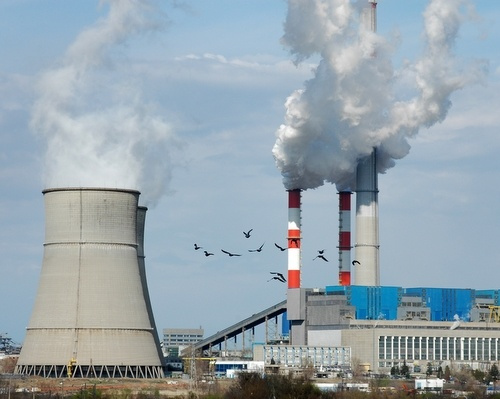Wet scrubber- Introduction:
Wet scrubber gain its popularity from Increasing urbanization and industrialization, with the consequent increase in the SO2 concentrations at ground level, mean that this problem will be a serious menace in the near future, unless methods are found for tackling it. Fortunately, some processes now being developed which meet the requirements for efficient sulfur removal and Avlon Sox Wet Scrubber is one such technology.
What is sulfur dioxide (SO2)?
Sulfur dioxide is a colorless, reactive gas produced during burning of sulfur-containing fuels such as coal and oil, during metal smelting, and by other industrial processes. Sulfur dioxide emitted to the atmosphere results largely from stationary sources such as coal and oil combustion, steel mills, refineries, pulp and paper mills, and nonferrous smelters. Generally, the highest concentrations of this criteria pollutant are found near large industrial sources, such as power plants and industrial boilers.
Health Impacts of Exposure to Sulfur Dioxide
High concentrations of sulfur dioxide affect breathing and may aggravate existing respiratory and cardiovascular disease. Sensitive populations include asthmatics, individuals with bronchitis or emphysema, children, and the elderly. Sulfur dioxide is also a primary contributor to acid rain, which causes acidification of lakes and streams and can damage trees, crops, buildings, and statues. In addition, sulfur compounds in the air contribute to visibility impairment in large parts of the country. This is especially noticeable in national parks.
How is SO2 emitted?
The growth of industrialization makes it imperative to reduce the amounts of sulfur dioxide emitted into the atmosphere. Sulfur dioxide is produced by some chemical processes but mainly by combustion reactions. When coal or sulfur content oil is burned, the sulfur combines with the oxygen in the combustion air to produce SO2, which is emitted into the air through a plant’s stacks, if not removed by a scrubber. The only method of reducing pollution from domestic heating, with its innumerable sources, seems to be the provision of fuels with a restricted sulfur content, which should be as low as possible. But the use of sulfur-free fuel in industry is unlikely to be accepted in practice, as it is far more costly to remove sulfur from the fuel than to cleanse the burnt gases.
How does Avlon Sox Wet Scrubber work
The removal of gaseous S02 from flue gases may be achieved by chemical or physical means, using gaseous, liquid or solid substances. Avlon Wet scrubber technology use combinations of these processes and had proved to be wet scrubbing with liquids and dry methods with solid substances. At Avlon the solvent used in Wet scrubber are cheap, have a high capacity to dissolve SO2, and form a substance that could be sold economically. This is to make sure that Avlon Wet scrubber operating cost is low and also our customer earn money by selling the biproduct of scrubber.
Once sulfur is burned and produces SO2, the exhaust gas passes through the scrubber where a spray mixture of limestone (or other chemical reagent) and water reacts with the SO2. The reaction enables the SO2 to be removed before it’s released into the atmosphere. The overall chemical reaction, which occurs with a limestone or lime sorbent, can be expressed in a simple form as:
SO2 + CaCO3 = CaSO3 + CO2
Equipment description:
Wet scrubber Parallel rotating rods create a series of short throat Venturi openings. A series of low pressure, large orifice spray nozzles direct the scrubbing solution into the system. Depending on the design of the scrubber, the gas can flow either concurrent (with) or counter-current (against) the scrubbing liquor. The high velocity turbulence caused by the Venturi openings ensures maximum gas to liquid contact. It is here that the droplets absorb the SO2 as well as impacting and dropping particulates out of the stream. The scrubbed gas is then sent through a demister or re-heater to prevent condensation and exhausted to atmosphere.
PH Control
The addition of lime or limestone to scrubbing solution is controlled by monitoring the pH of the solution. Lime slurries are generally alkaline with a control point near a pH of 12 while limestone slurries are more neutral. CaSO4 concentration decreases slightly as pH decreases. Furthermore, because the concentration of oxygen dissolved in the slurry is constant, the formation of sulfate depends only on the concentration of SO3. The precipitation of CaSO4 increases as pH decreases, thus CaSO4 is apt to form scale at a lower pH. Hard scale formation can be controlled by keeping the pH high.
By Product
When SO2 combines with limestone, a primary byproduct is calcium sulfate, commonly known as synthetic gypsum. A recyclable product, synthetic gypsum is used in the manufacturing of wallboard and cement, and as a soil amendment in agricultural and construction applications. In practice, air in the flue gas causes some oxidation and the final reaction product is a wet mixture of calcium sulphate and calcium sulphite (sludge). A forced oxidation step, in situ or ex situ (in the scrubber or in a separate reaction chamber) involving the injection of air produces the saleable by-product, gypsum, by the following reaction:
SO2 + CaCO3 + 1/2O2 + 2H2O = CaSO4.2H2O + CO2
Keep visiting Avlon-php.com for more information. We are one of the best manufacturing company in Philippines. Dealing in Drinking water plant, Sewage Treatment Plant, Wet Scrubbers, Dust Collectors, Boilers etc. Avlon follows the DENR RA 8749 Philippine Clean Air Act DAO 2000-81






